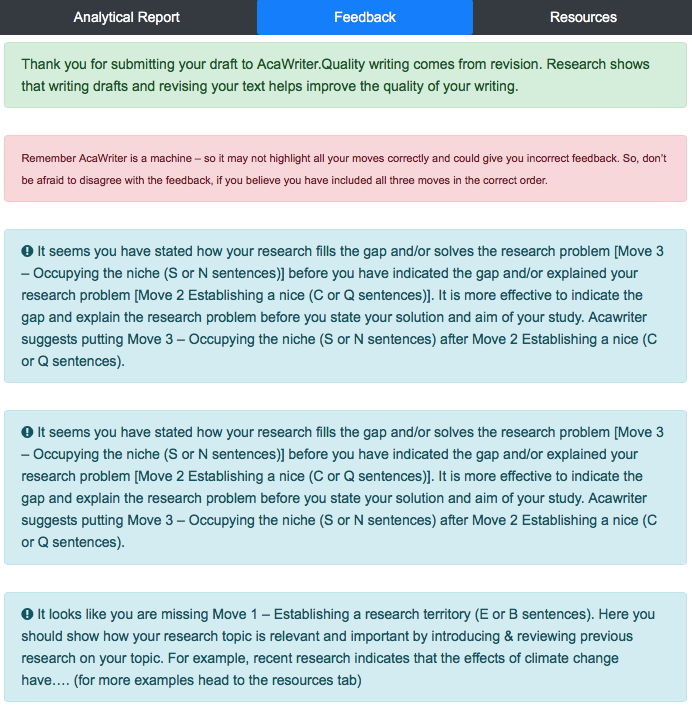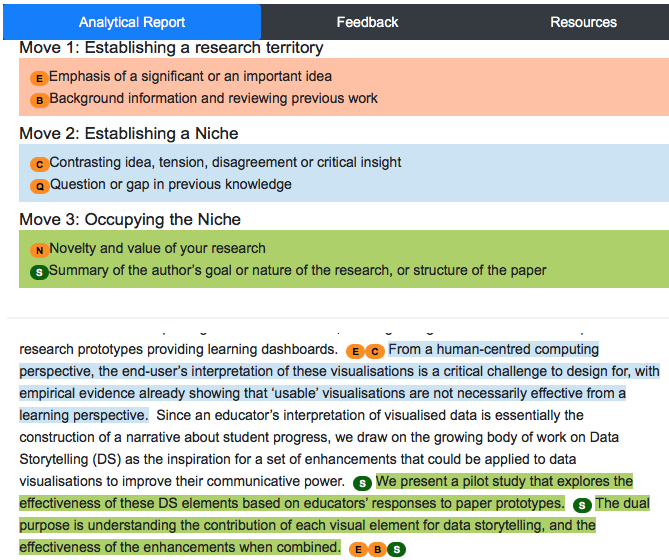How can AI help PhD students get their work published? A key to this is that they learn, through extensive practice, how to make the hallmark ‘moves’ that reviewers are looking for when assessing a paper. However, there is extensive evidence showing that students struggle to grasp these, and that supervisors are not always expert in coaching this even though they are themselves clearly able to write in this way.
In CIC’s Academic Writing Analytics (AWA) project, we are tuning the AcaWriter web application to different contexts. CIC PhD student Sophie Abel arrived from QUT last year with a professional Academic Language & Learning background, training Higher Degree Research (HDR) students to improve their research writing. She is now adapting AcaWriter to the specific needs of HDR writing, such as learning how to craft a compelling abstract and introduction to a research paper.
Sophie is building on the influential work of John Swales, who proposed a simple framework to describe the typical ‘moves’ that an author makes when establishing the significance of their work in an Abstract and Introduction. Swales’ Create A Research Space (CARS) model is widely used in universities, and is now integrated in AcaWriter to help students learn how to make these hallmark moves in their own writing.
The CARS moves are as follows:
- Establish a research territory to show how the research area is important and worth investigating, by introducing and reviewing previous research
- Establish a niche by identifying an important gap in our understanding
- Occupy the niche by stating how one’s own research seeks to close/fill the gap.
All experienced researchers will recognise these as something they do in their own writing, and look for when reviewing papers (perhaps unconsciously). It has been shown that CARS helps apprentice researchers grasp these moves, and applying CARS makes it easier for readers to understand the argument — critical to having one’s work published.
AcaWriter analyses the draft abstract or introduction entered by the student, and highlights these moves in the text. It also gives feedback if they’ve missed a move, or made them in a different order:

Sophie Abel will be piloting the CARS version of AcaWriter with HDR students next month to test the new design as part of an integrated Academic Writing training program. If you’re a HDR student, or a PhD supervisor interested in learning more, or participating in this program, please contact Sophie: sophie.abel@student.uts.edu.au.
